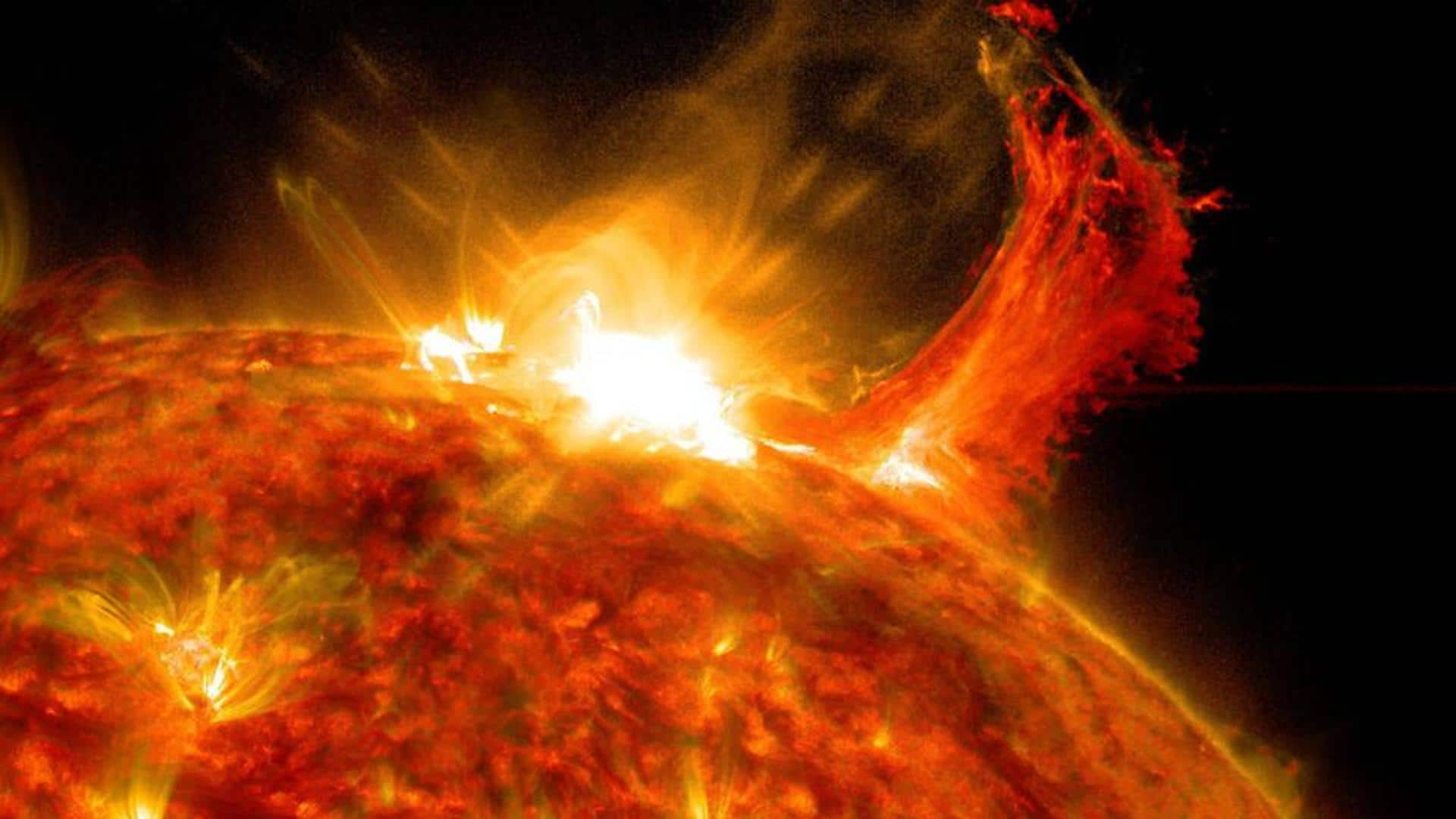
How NASA's AI-powered tool will warn about "dangerous space weather"
What's the story
Thanks to weather forecasting centers, we are warned well in advance about adverse weather events on Earth. But what about solar storms or other menacing space events? We will not have to worry anymore as NASA has us covered. The space agency has developed a new computer model, combining artificial intelligence and satellite data, which could "sound the alarm for dangerous space weather."
Model
What is the need to study space weather?
The Sun is constantly spewing "solar material" into space, either in a steady flow, which is the solar wind, or shorter, energetic bursts. When this solar matter makes contact with Earth's magnetic field, it creates the so-called "geomagnetic storms." The resulting impact of these storms can vary from mild to extreme but in recent times it is becoming a concern.
Example
The most intense solar storm recorded is the Carrington Event
The most powerful solar storm recorded to date occurred in 1959, called the Carrington Event. It caused fires at telegraph stations, preventing messages from being relayed. If incidents like the Carrington Event were to occur today, the resulting impact would be far more serious. The effects could include electrical disruptions, continual blackouts, and interferences to global communications systems.
Information
How was the AI model developed?
Researchers used an AI method called "deep learning," where computers are trained on previous data. The team used this technique to identify the link between solar wind measurements from space missions and geomagnetic disturbances recorded on ground stations across the world.
DAGGER
NASA's system can provide warnings 30 minutes in advance
Using this type of AI, the team created a computer model named DAGGER (Deep Learning Geomagnetic Perturbation) that is claimed to "quickly and accurately predict geomagnetic disturbances worldwide," and it can give these warnings 30 minutes before any disturbance occurs. "The model can produce predictions in less than a second, and the predictions update every minute," said NASA in a blog post.
Testing
DAGGER could "quickly and accurately forecast the storm's impacts"
DAGGER was tested on two geomagnetic storms which took place in August 2011 and March 2015. In both scenarios, DAGGER could "quickly and accurately forecast the storm's impacts around the world." DAGGER is the first to combine "AI with real measurements from space and across Earth to generate frequently updated predictions that are both prompt and precise for sites worldwide," said NASA.
Information
It can minimize and prevent "devastation to modern society"
"With this AI, it is now possible to make rapid and accurate global predictions and inform decisions in the event of a solar storm, thereby minimizing-or even preventing-devastation to modern society," said Vishal Upendran from India's Inter-University Center for Astronomy and Astrophysics.
Implication
DAGGER's computer code has been made available to the public
The DAGGER model's computer code is open source, and it could be used by power grid operators, satellite controllers, and telecommunications companies, for making predictions as per their requirements, according to Upendran. Timely warnings could help them "protect their assets and infrastructure from an impending solar storm" by temporarily taking the systems offline or moving satellites to different orbits.